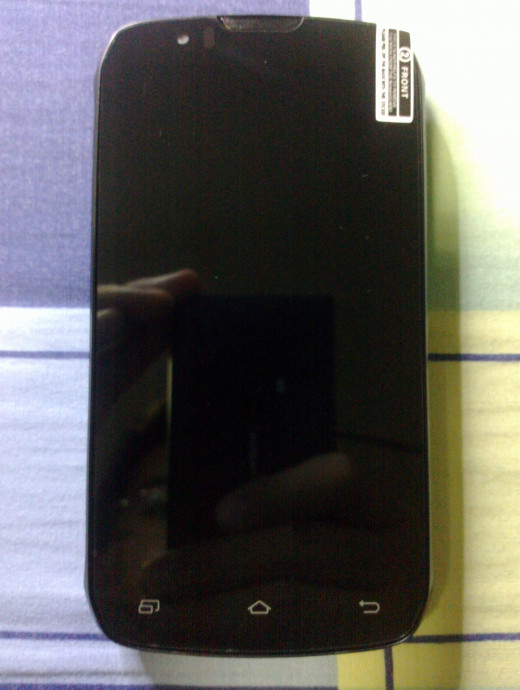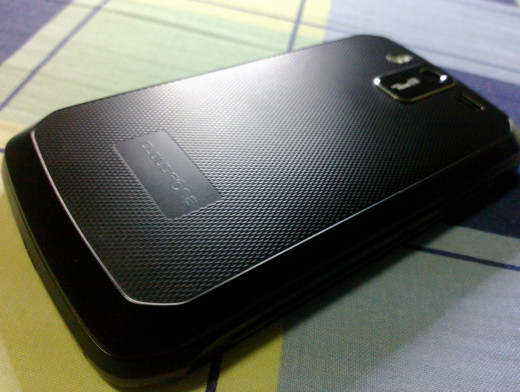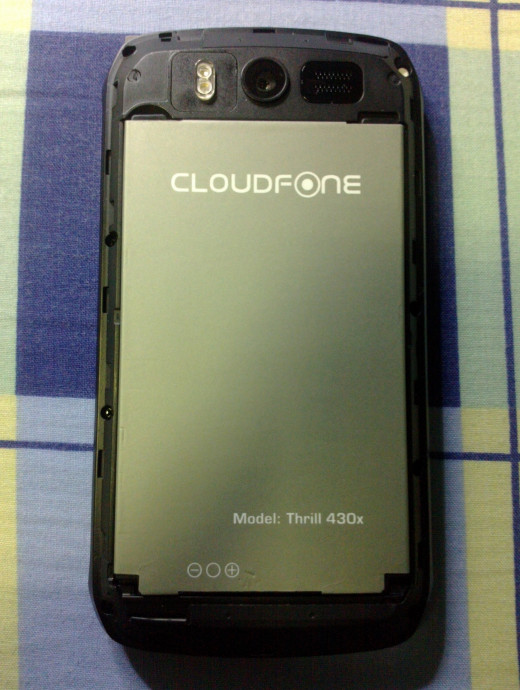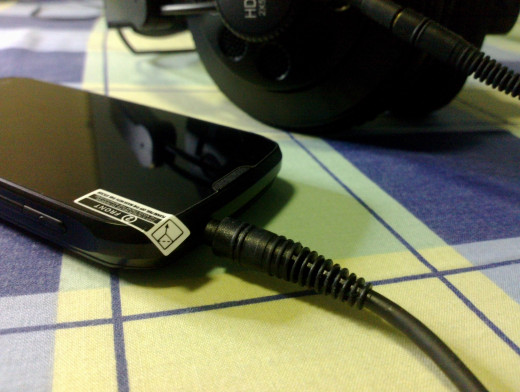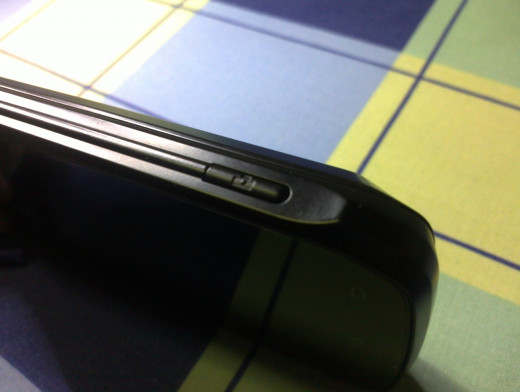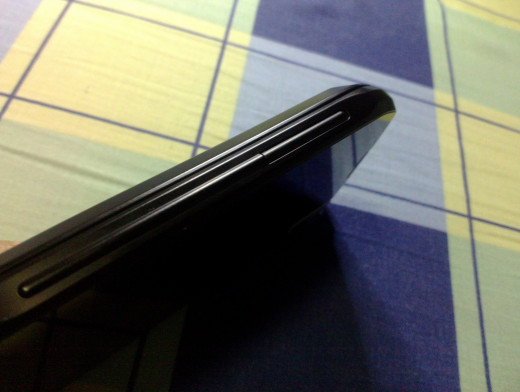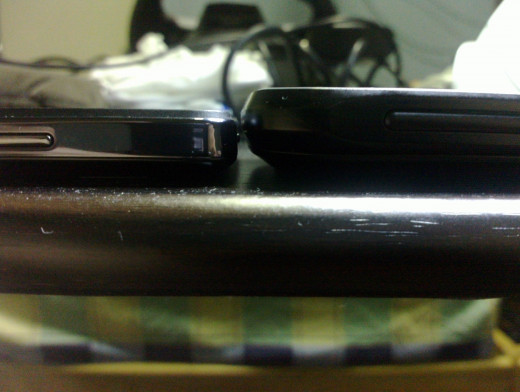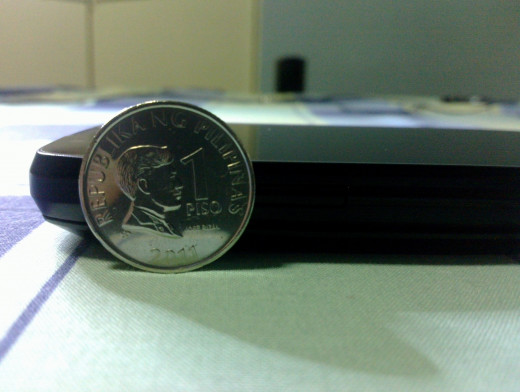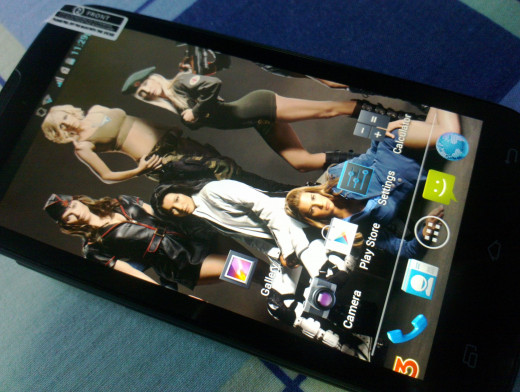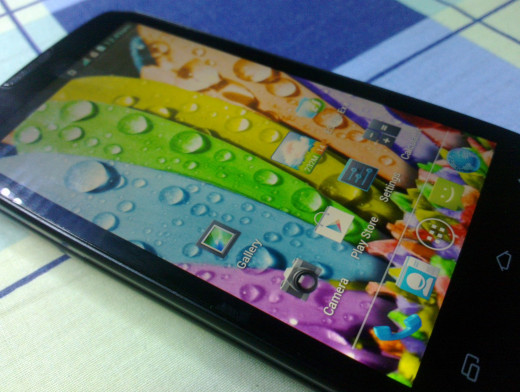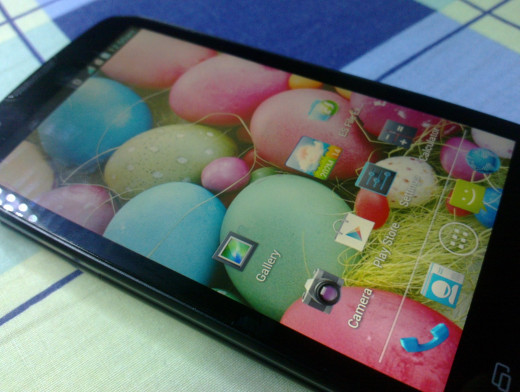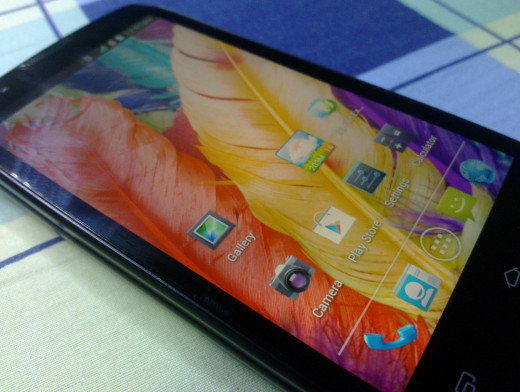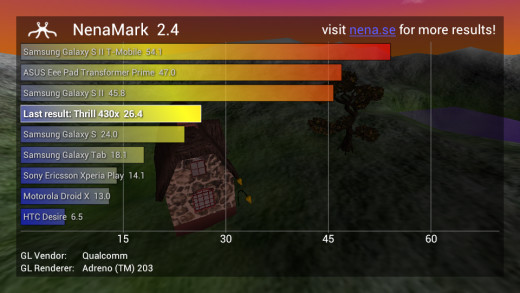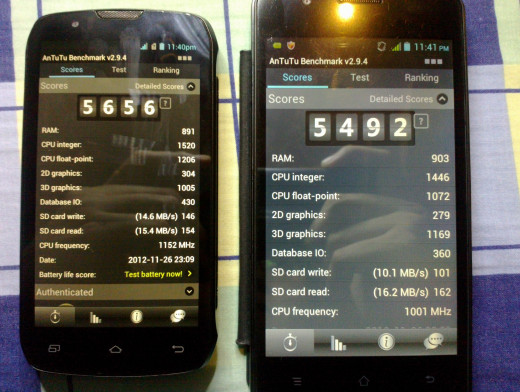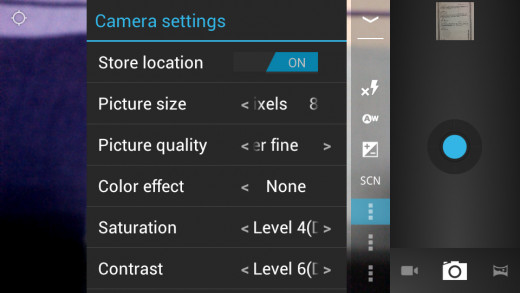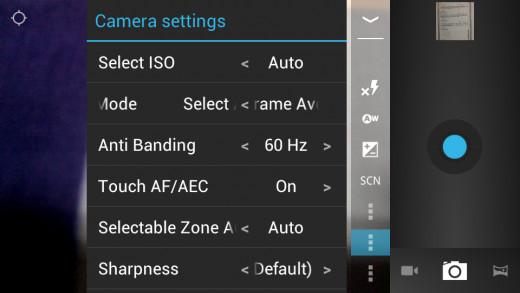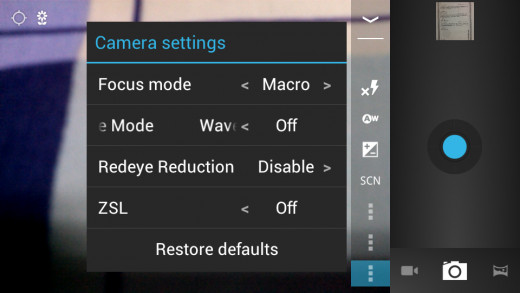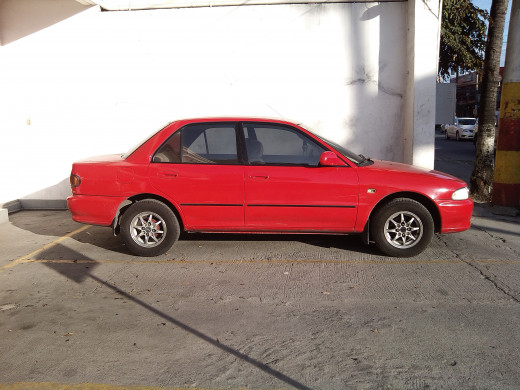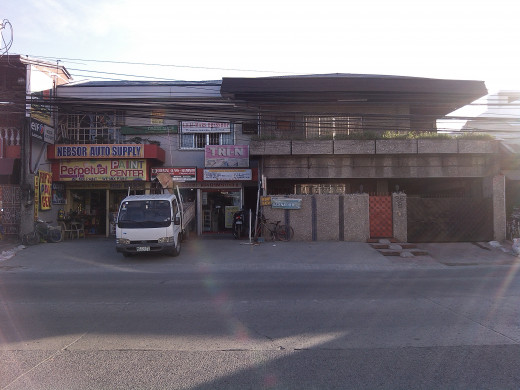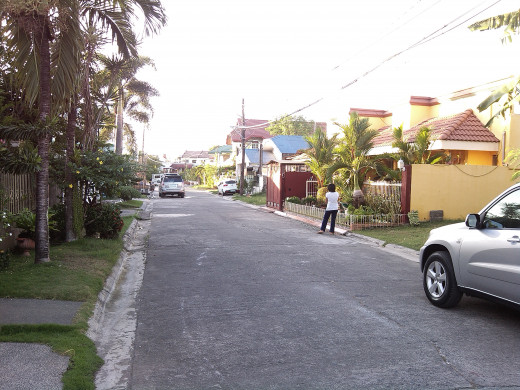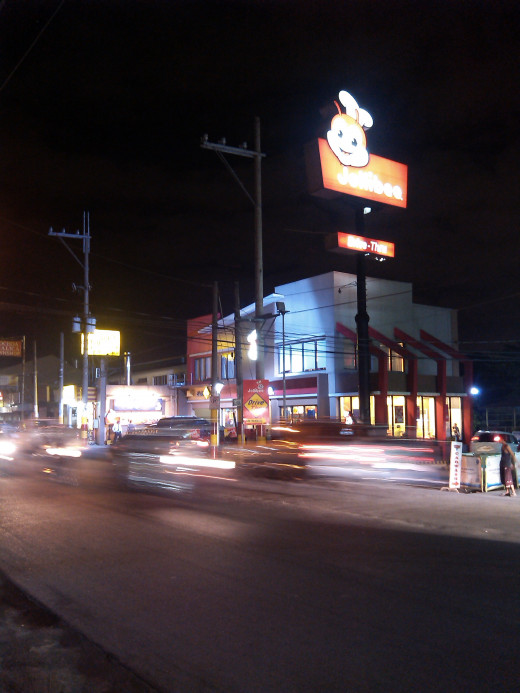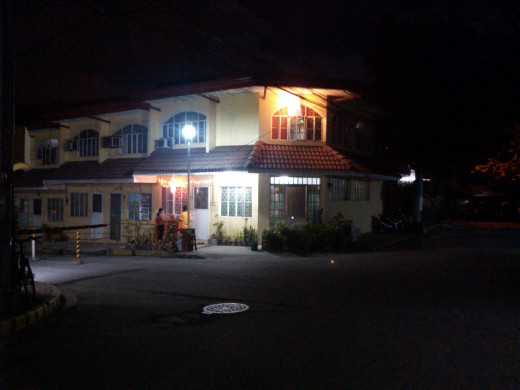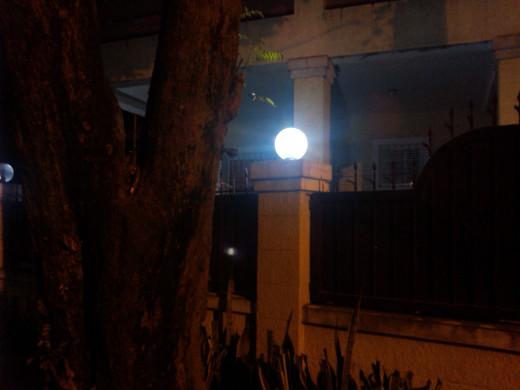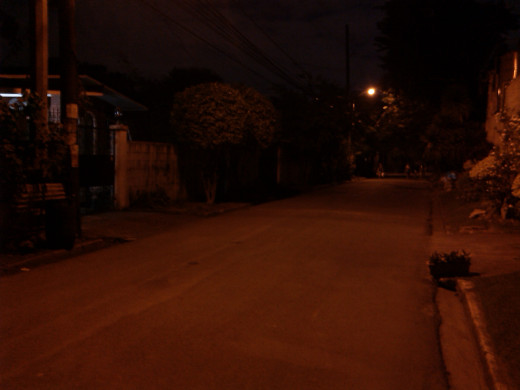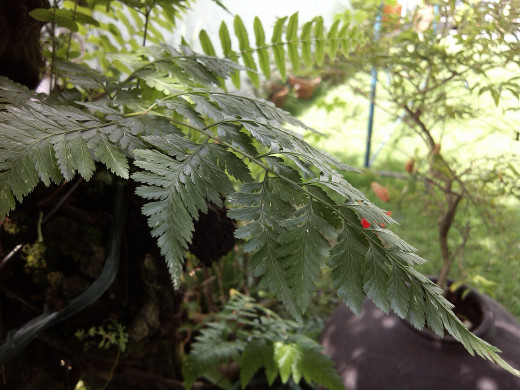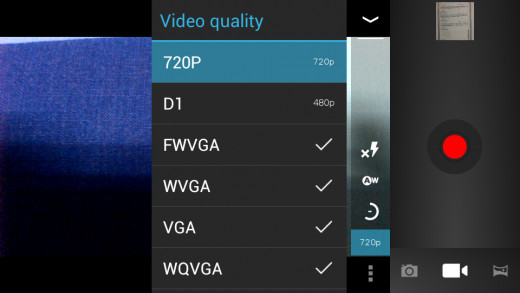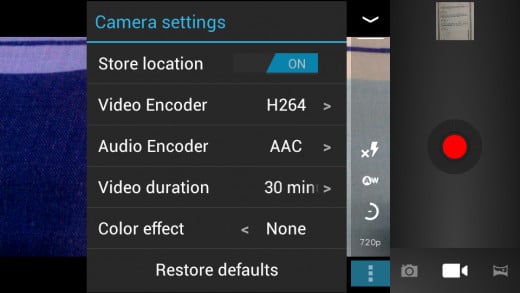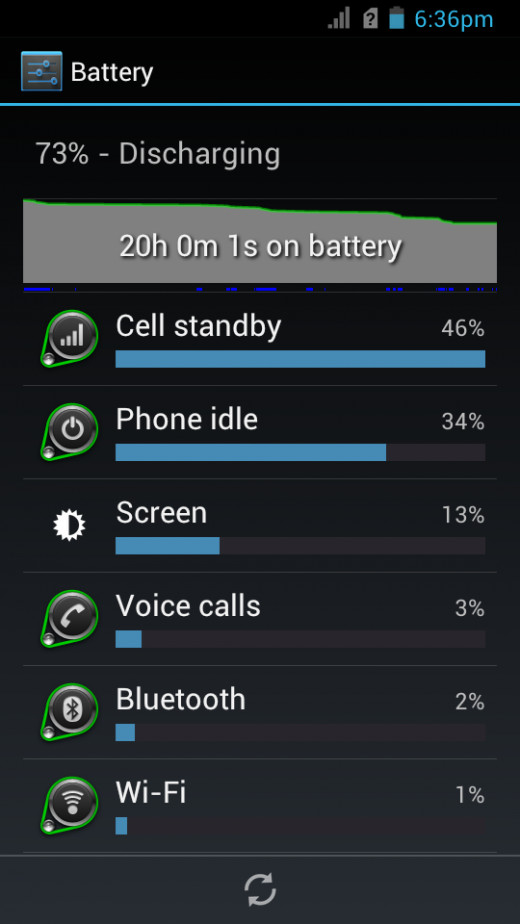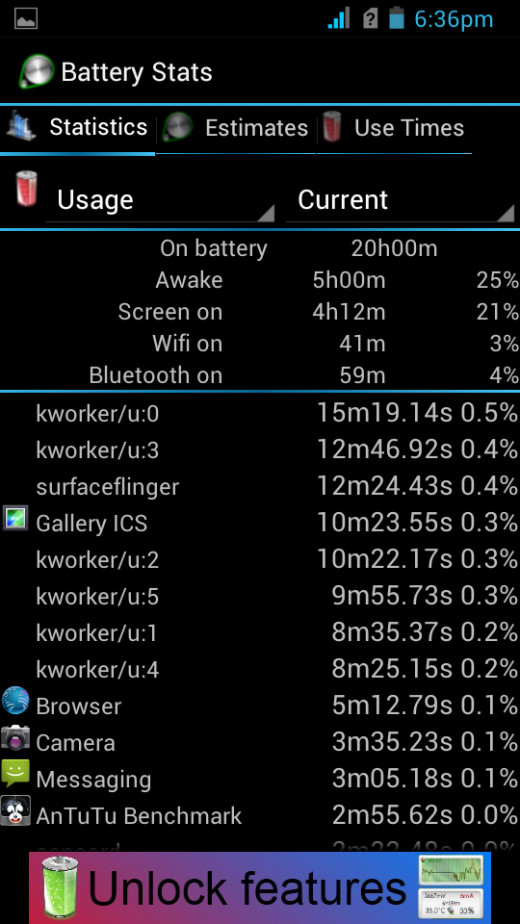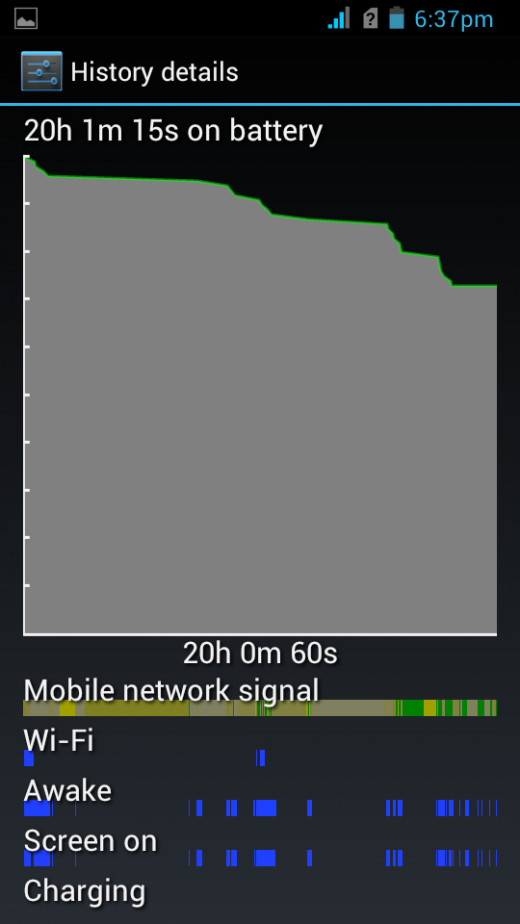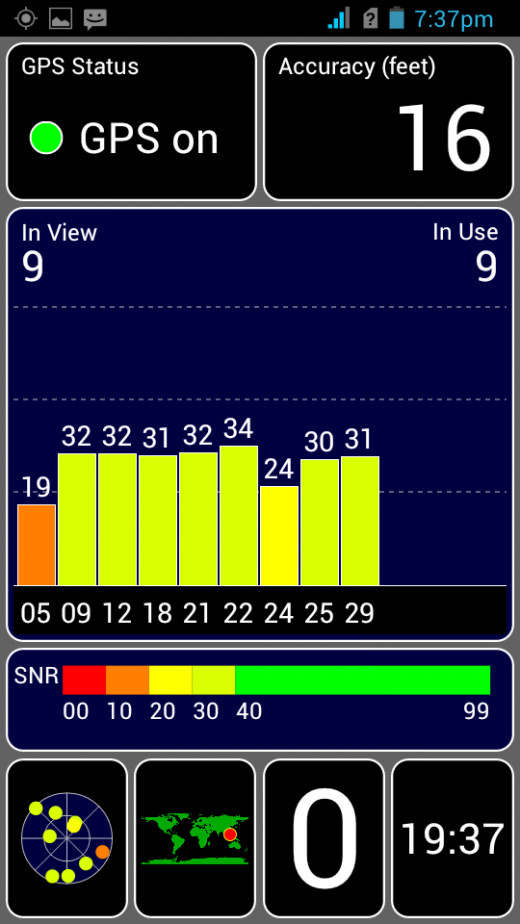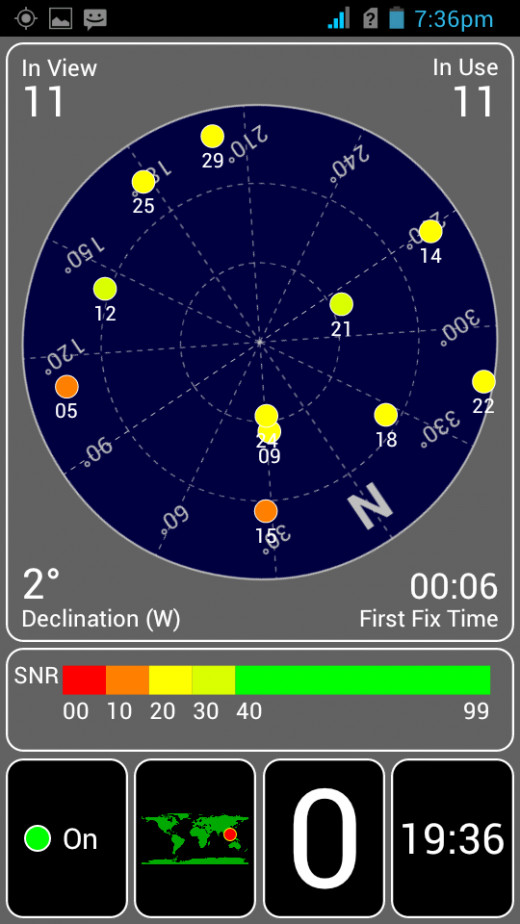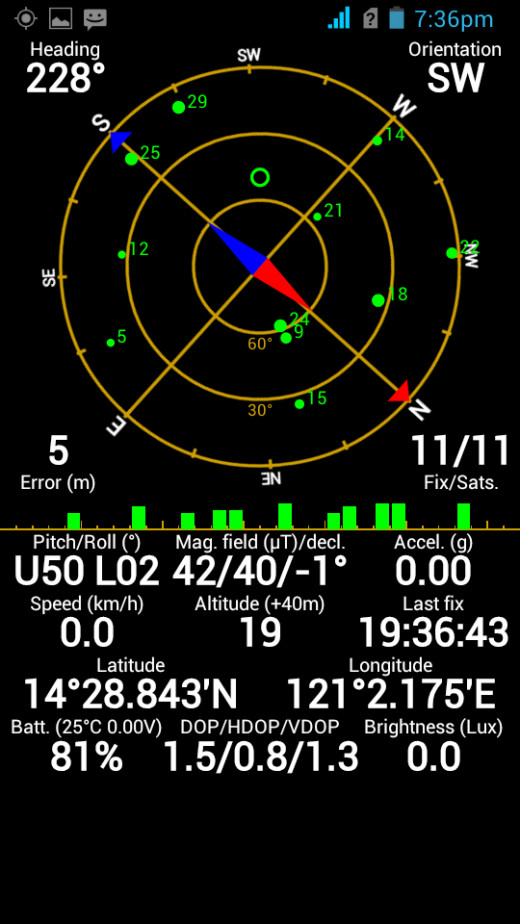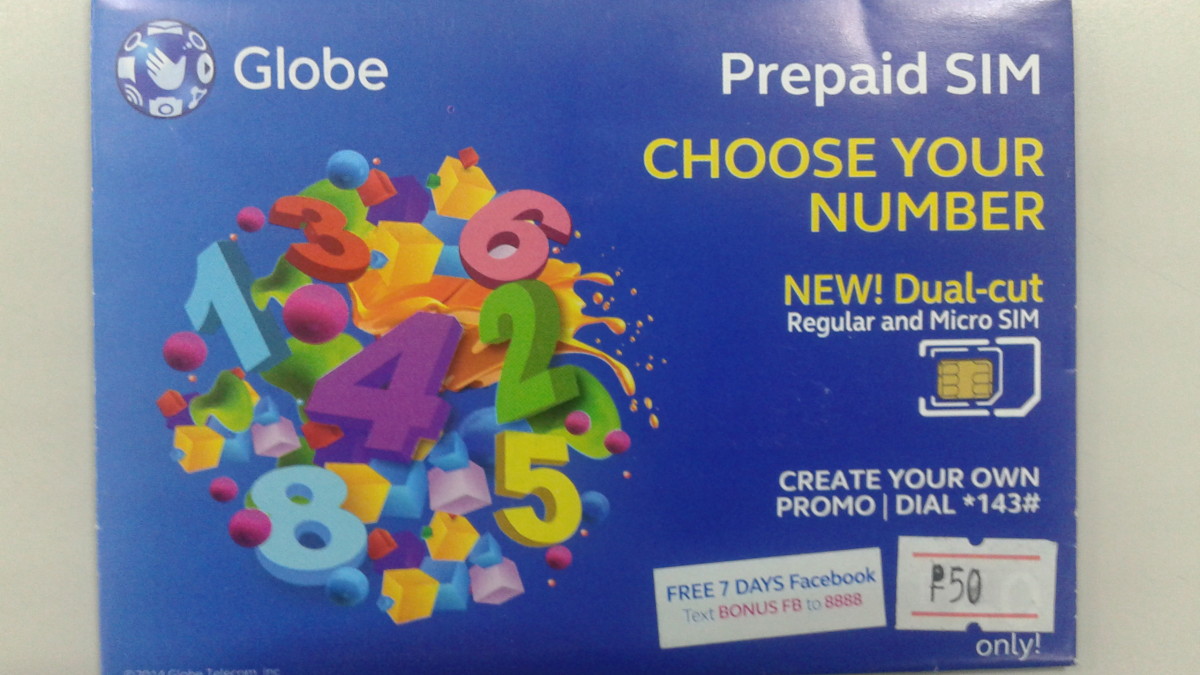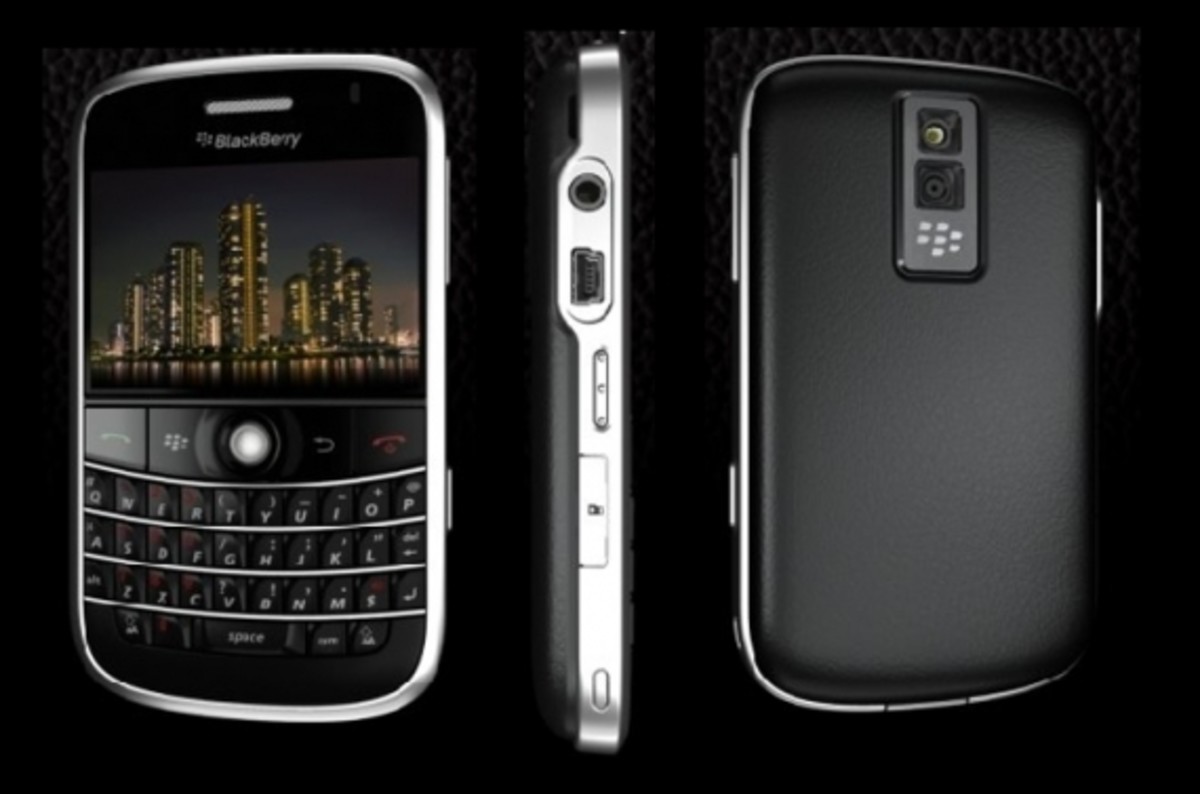Cloudfone Thrill 430x Review
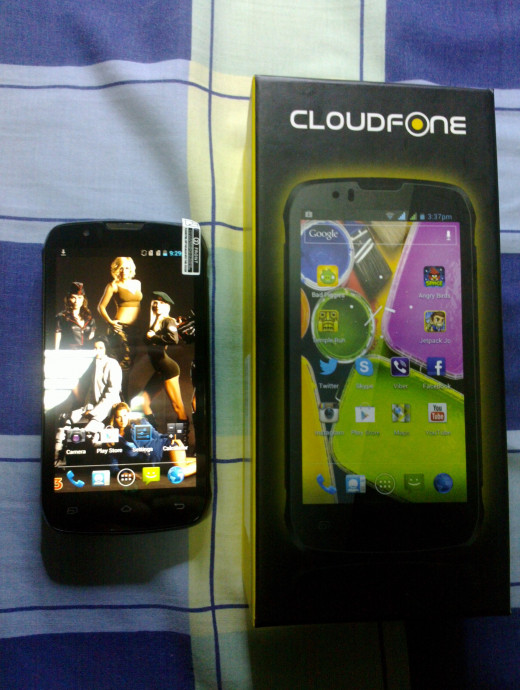
DAT BATT
I first stumbled upon the Cloudfone Thrill 430x when someone opened a thread in TipidCP and stated that it had a 4160 mAh battery. I found it hard to believe, but they immediately posted pictures of the device much to everyone's delight and mine. It really was a 4160 mAh battery, and a rather fat one at that. Nevertheless, the prospects of such a large battery was droolworthy. Nevermind the recent releases of Cherry Mobile's Flare and Titan to much fanfare. What's a smartphone without a big battery? And the Flare certainly had a small battery while the Titan's battery is big and easily lasted more than a day of heavy use, the large 2350 mAh battery was small next to the Thrill 430x's 4160 mAh battery. It was numbers game.
If anyone is aware what a big-ass battery can let you do, take a look at the battery tests of Motorola's DROID RAZR MAXX which has a 3300 mAh battery. The results are impressive, easily lasting nearly twice as long as the nearest competitor in some tests -- and it's a really, really big gap. You can view the battery test results of the DROID RAZR MAXX here: http://blog.gsmarena.com/motorola-DROID-razr-maxx-battery-trial-is-over-meet-our-new-champion-test/ Courtesy of GSMArena
Design and Build Quality
The 430x's design is reminiscent of Google's Galaxy Nexus though the screen on the 430x isn't curved. The front contains the front-facing camera, light sensor and earpiece above the screen and below it the menu/options, home and back touch buttons. The touch buttons unfortunately don't have any backlighting. The back contains the 8 megapixel camera, dual LED flash and speakerphone. The camera lens is recessed to prevent it from being scratched while the backcover itself has subtle, smooth beveled dots that give a feeling of additional grip on your fingers. The construction is all matte plastic with no shiny or glossy finish on any part. This makes the phone look a bit cheap and understated when viewed from behind, but the overall feel in hand is very sturdy and solid.
The bottom portion of the phone contains the microphone and microUSB port for charging. The top-right has the 3.5 mm jack and another microphone for noise cancellation duty (to reduce environmental noise when making calls) and possibly video recording (though audio from video recordings are just mono).




The 430x has four (4) hardware buttons. The volume up and down on the upper-left side of the phone, the power button on the upper-right side of the phone and the dedicated camera button on the lower-right side of the phone. The 430x's camera button is tactile but surprisingly soft. This is particularly important with the dedicated camera button as it also has a half-shutter function which, when you press the camera button halfway, it allows you to focus and time your shots and pressing all the way will take the shot. It is a good implementation of a dedicated camera button and it will be most appreciated by people taking photos with just one hand. Despite that, the placement of the volume button on the upper-left side will make it awkward for right-handers who will be forced to use their middle or index finger for changing the volume.


The overall build of the Cloudfone Thrill 430x is very good. The phone is very compact and weight is distributed evenly. This comes from the battery covering a huge portion of the back area as well as accounting for over half of the phone's weight. The phone feels very, very light without the giant battery. While the battery provides the phone's hearty and compact feel, it also provides it with thickness. The Thrill 430x is 14.2 mm thick. Comparably thick phones include the Nokia 5800 (15.5 mm) and Sony Ericsson Xperia Active WT18i (14.3 mm). I have provided a thickness comparison below of the 430x with the Cherry Mobile Titan (10.5 mm) and a 1 Peso coin (24 mm diameter). The phone also comes attached with a screen protector out of the box.
Here is the checklist of what comes inside the box:
- 1x Cloudfone Thrill 430x
- 1x Earphones
- 1x USB cable
- 1x Wall charger
- 1x User's manual
- 1x Prepaid Globe SIM
- 1x 4160 mAh battery


Screen
The Thrill's facade is graced by a 4.3" 960x540 Sharp ASV screen which results into 256 PPI. Text is crisp and sharp. The Sharp ASV screen is a derivative of VA (vertical alignment) panel technology. While technically not IPS and despite being labelled as an IPS screen (it says "IPS" on the box), it is very much like an IPS screen, only better. Viewing angles are great and just like any IPS panel, looks great even at extreme angles (178 degrees). Brightness is plentiful. Color reproduction is very good. Contrast is exceptional for an LCD, to the point that it's difficult to distinguish the black on the screen and the black bezel -- and this also makes this screen excellent for viewing movies. Color saturation though may be a bit lacking. The default tone of the screen is warm and is subject to preference. Another impressive thing about the screen is the gap, or rather the lack of, between the panel and the glass. The screen feels like it's floating and the effect in person is impressive. Lastly, there is also a very, very subtle hint of color shifting which is the result of slower response times which is a weakness of VA panels.




Make no mistake though, the Sharp ASV screen is a top-bracket screen and is one of the latest advancements in VA panel technology. The color shifting I mentioned is only noticeable when you display mostly darker colors (extreme right of the color spectrum) like "the girls of Red Alert 3" wallpaper I feature in my pictures. You will also need good eyes to notice it. All this says much about the excellent screen on the Thrill 430x. Top notch stuff.
Here are some shots of the Thrill 430x's screen demonstrating viewing up front and at angles:
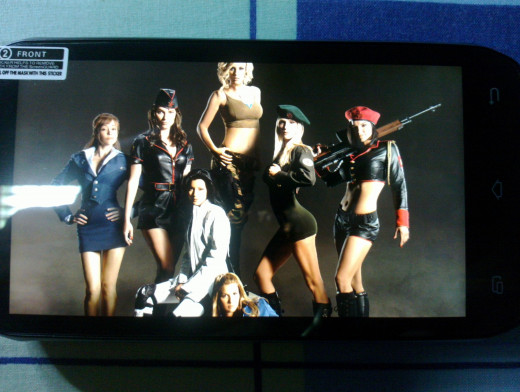
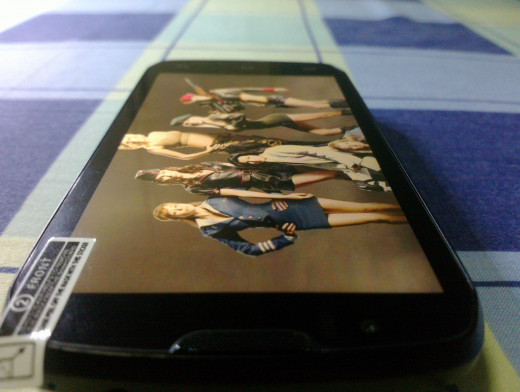
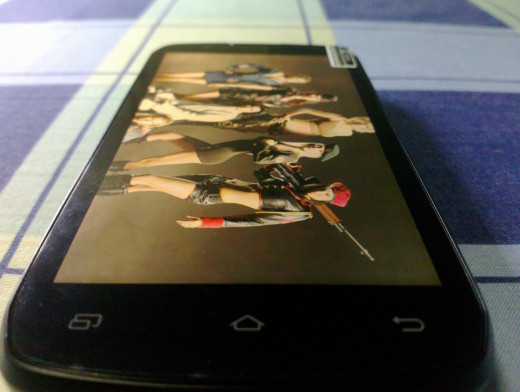
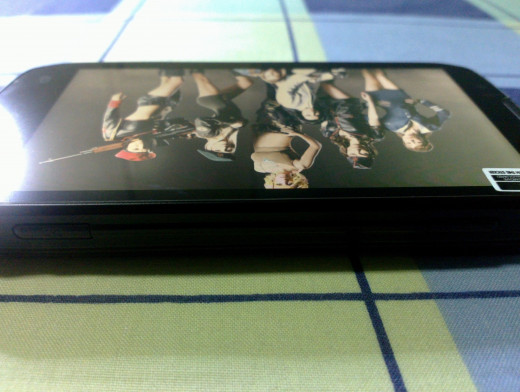
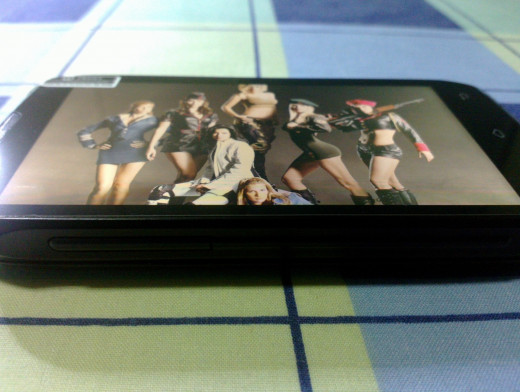
Below is a comparison of the Thrill 430x (4.0") next to the Cherry Mobile Titan (5.0") which I also recently reviewed. I personally would've liked if the Thrill had the same "deep color mode" option like the Titan to increase color saturation.
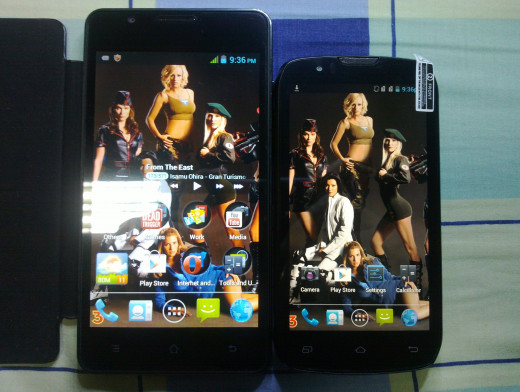
Processor and General Performance
The Qualcomm Snapdragon S4 Play MSM8625 is a dual-core Cortex A5-based SOC with an Adreno 203 GPU. Unlike the other Snapdragon S4 lineups (the Plus, Pro and Prime) which are manufactured at 28 nm, the Play which the MSM8625 belongs to is manufactured at 45 nm. Despite being in the same manufacturing process node as other popular Cortex A9 SOCs like the TI OMAP 4430/4460, the Cortex A5 is a more power efficient chip and has effectively a lower thermal and power envelope. Given that, the Thrill 430x should enjoy lower nominal and peak power consumption as well as lower temperatures compared to other devices that use a dual-core Cortex A9 SOC manufactured at 45 nm. The thermal advantage is particularly more evident when it comes to games as the Thrill 430x doesn't become as hot as phones that use a dual-A9 SOC when gaming. It remains relatively cool, and that's considering nearly the whole back of the phone is covered by the battery and the battery can spread heat quickly for you to be felt. Pairing a power efficient processor with a gigantic battery makes for a very long use time as will be seen in the battery section later.
Even though the Cortex A5 is officially rated at only 1.57 DMIPS per Mhz vs the 2.5 DMIPS per Mhz of the Cortex A9, it's no slouch as can be seen on AnTuTu and Quadrant. The Cortex A5 retains the important extensions of the Cortex A9 such as Jazelle, VFP and NEON which contribute significantly to performance. The Adreno 203 isn't a slouch either, being able to push the 960x540 screen and still score 26.4 FPS in Nenamark 2. The Thrill 430x can handle most 3D games on the Play Store without problems. Some of the games tested are Virtua Tennis, Dead Trigger and Need for Speed: Most Wanted. The same games on the Thrill 430x feel a bit slower compared to the Titan, but we can attribute this to higher resolution screen on the Thrill 430x which has 35% more pixels than the Titan (960x540 vs 800x480), in which case the GPU on the Thrill 430x has to work harder.


Despite the higher AnTuTu benchmark scores of the Cloudfone Thrill 430x, general performance is a step lower on the dual-core Cortex A5s. As always, synthetic benchmarks don't always reflect real world performance. The videos below demonstrate the Thrill 430x against the Cherry Mobile Titan which has dual-core Cortex A9s. In addition, the Thrill 430x has more RAM free than the Titan yet still it lags slightly behind the Titan for tasks that involve heavy CPU usage, such as rendering webpages and loading applications. The Thrill 430x's MSM8625 is very fast (the "not too" sensitive screen withstanding), but for general feel and use, you will notice that the MTK6577 on the Titan is a step above in performance. Maximum RAM free on the Thrill 430x is around 290 to 330+ MB after a "kill all" action.
The tests below involved caching the respective pages beforehand in the browser to remove the network speed out of the equation. Also, loading of the webpages were not done at the same time because bandwidth will be shared by both devices. I believe the methodology of other reviewers tapping on the URL at the same time is wrong, as tapping just microseconds earlier on one device gives it bandwidth priority and thus, an unfair advantage. It's first come, first served. Both Anandtech and ArsTechnica are content-heavy pages with plenty of HTML5, Javascript and other plugins to severely burden the device, thus I deem both suitable sites for testing real world browsing capability.
Cloudfone Thrill 430x vs CM Titan Browser Test - Anandtech.com
Cloudfone Thrill 430x vs CM Titan Browser Test - ArsTechnica.com
Camera
The Thrill 430x has an 8 megapixel camera with dual LED flash that takes very good still shots for the price. Low light performance of the camera is average with a good bit of noise but otherwise takes clear shots in low light given the right settings. To assist with low light shots, it has a dual LED flash that is quite powerful. Shots taken in adequate to good lighting have very good resolved detail, have natural color reproduction, but is slightly oversharpened. The best thing about the 430x's camera is the inclusion of a dedicated camera button with a half-shutter function. This allows you to focus and time your shots right, not to mention it's easier to grip the phone like a compact digicam this way. One-handed shooting is easier on this phone compared to phones without a hardware camera button. The camera's viewfinder is also very fast with little lag when there is sufficient lighting.
The camera on the Thrill 430x has a myriad of manual options. You can select from spot, average (frame average) or center-weighted metering. ISO options range from 100 to 1600 without sacrificing resolution (you can still take 8 MP shots at 1600 ISO). Enabling touch to focus is also possible. There is also the ZSL (zero shutter lag) option which allows you to take a picture the moment you press the shutter. The only thing I don't like when enabling ZSL is that you won't be able to focus anymore with a half-shutter and your focusing is effectively infinite. Despite the manual controls for the still shot camera, nifty features such as "Face shot", "Smile mode", "Beauty shot" "4/8/16 Burst shot" are not available on the Thrill 430x. I personally loved the "4/8/16 Burst shot" mode on the Titan which allowed me to shoot up to 16 successive full resolution shots in a matter of seconds. The Thrill 430x does have panorama shooting though.



While the overall quality of the still shot camera is excellent, even against much higher priced smartphones, I do, however, have a giant quirk with the camera. It is practically impossible to take an extremely upclose macro shot with the Thrill 430x if your subject is pretty small or very thin (i.e. small flowers, stem of a plant). The camera's focal point is quite wide and attempting to take extreme upclose shots of small objects results in the background being put into focus rather than the foreground. I have fiddled with the camera over and over to attempt an extreme macro shot, but to no avail. The closest distance I could get to take a clear macro shot of a small object was about 7 inches. The EXIF details from the shots couldn't help me either as the only relevant information about the lens that was being recorded was focal length, which is 5 mm, which is slightly narrower versus other smartphone cameras. If you look some of the sample macro shots below, it is evident that it's the background being put into focus.
Thrill 430x Camera Samples (Good lighting)
Click thumbnail to view full-size






Thrill 430x Camera Samples (Low light)
Click thumbnail to view full-size




Thrill 430x Camera Samples (Macro shots)
Click thumbnail to view full-size




Below are video recording samples taken by the Thrill 430x in 720p.
Please watch the videos in 720p quality to see what the recordings actually look like.
Video recording sample 1: http://www.youtube.com/watch?v=grCK8c6MZys
Video recording sample 2: http://www.youtube.com/watch?v=VgXiw4rGyNs
Video recording sample 3: http://www.youtube.com/watch?v=yiSrosr6vZE
I was mildly surprised when I found the 720p option under video recording. Qualcomm lists the Snapdragon S4 Play SOCs to be capable of recording only up to WVGA (800x480) resolution. The Thrill 430x proves otherwise as it is able to record in 720p. However, the recording quality leaves much to be desired. While detail level is relatively good, there are just too many dropped frames when recording in 720p and the low bitrate (around 4.2 Mbps on average) adds severe macroblocking. In addition, there is also this focusing issue while recording video where the camera is aggressive in focusing in and out and it is particularly evident in the third sample video recording (shot at night in front of Jollibee with cars passing by). The macroblocking rears its ugly head especially when there is a lot of motion going on and the bitrate can't compensate for the additional data for detail required by fast paced scenes. In comparison, the bitrate of the Cherry Mobile Titan's 720p video recording averages around 12 Mbps and there are no dropped frames. On the upside, the low bitrate of the Thrill 430x's 720p recording is about 30 MB per minute of footage while the Titan is almost at a hefty 100 MB per minute. Overall, video recording is serviceable though it is advised you shoot in 480p if you are shooting fast paced scenes to avoid dropped frames.


Here's the lowdown on the camera:
- Very good outdoor shots
- Average low light and good indoor performance
- Various focusing issues and it's practically impossible to perform extremely upclose macro shots
- Successful macro shots have very good resolved detail
- Video recording at 720p is terrible, but still usable for most occasions except fast paced scenes
- Overall, the camera is a very good still shot camera with plenty of manual options
The front facing camera is typical, nothing noteworthy. It's perfectly usable for Skype and whatnot.
Battery
We have finally reached the pièce de résistance -- the giant 4160 mAh battery. To give you an idea, it took nearly 5 hours to fully charge the phone from 26% with a 1A charger. It is uncommon for phone manufacturers to pack a large battery on smartphones today simply because it will have a negative effect on the device's aesthetics. Allure of smartphones, particularly high-end ones, is that they combine powerful performance and top-notch features in a sleek, desirable form factor. Most smartphones today typically last at most one day with moderate to heavy usage. Those that don't last a day from moderate to heavy usage are usually considered unforgivable, but may have other redeeming qualities that allows some consumers to reconsider them. Not everyone has the same use pattern and usage. Some use their phone mostly as a media player and given that, an AMOLED screen is advisable even if paired with a smaller battery because an AMOLED has per-pixel lighting where darker images/pixels rendered equals lower power consumption. Some people, like me, don't really have any other way around except to get a phone with a large battery. My use pattern involves HSPA connection on for a few hours with heavy browser usage and screen brightness set to auto (which is usually bright). Others like to play games on their phone and simply, the only solution is a big ass battery because we all know how fast 3D games can drain battery. I do make an exception for PS1 emulators, it doesn't suck up anywhere near as much juice as native Android 3D games.
Cloudfone lists the Thrill 430x has having a "3 day battery life". I'm happy to report that for light usage, it well exceeds that and in practice, 3 days is achievable on moderate usage. 20 hours has been the longest I haven't plugged my phone as I have a tendency to backup my pictures and whatnot the moment I'm on my computer.
For 20 hours, I lost merely 27% battery. I had 73% (4.0v) after a long, long day. I made sure I had 100% charge (4.22v) before this test. I didn't have much time to perform heavy tasks such as web browsing and whatnot, but the fact that it only lost such a minuscule amount is ridiculous. Here's the approximate breakdown of the usage in the 20 hour test:
- 4 hours of screen time/screen turned on as I showed stuff on my phone such as pictures to people (wasn't even aware it was on for four (4) hours!)
- Around 20 mins of calls
- Around 40 mins of wifi
- Around 15 mins of HSPA/3.5G web browsing
- Heavy camera use with several dozen shots taken
Any other smartphone that I've had would have certainly lost around half the battery capacity. The shocker is the screen time of four (4) hours and brightness was set to auto. The brightness sensor on the Thrill 430x isn't aggressive, so the screen was bright for the most part. With my other smartphones with the exception of the Titan, I am constantly worried about how much screen time I'm using because the screen has been traditionally a major battery drain. Even with my iPhone 4, where iPhones have proven to be power efficient, there is a constant awareness of brightness levels and remaining battery. The Thrill 430x allows you to forget about those things -- you just use, use and use.



Other Stuff
The sound output of the Thrill 430x is clean. There is a very subtle hissing (white noise) when there's nothing playing, audible with my IEMs (tested with my Sony MH-1C and TDK Clef-P "Vocal Tuning") but it's not an issue and I doubt you would notice it if I hadn't mentioned it. The power output of the Thrill 430x is impressive, being able to reasonably drive my Superlux HD 668B (and the HD 668 is a bit demanding for portable players at 56 ohms impedance). The power output is comparable to my 6th gen iPod Classic and 3rd gen iPod Nano. It's quite powerful.
The Thrill 430x also has built-in GPS with A-GPS support. The performance of the GPS chip inside the Thrill 430x is very good, being able to lock-in in under 15 seconds without the use of A-GPS. It was able to lock-in while moving in a car in under 25 seconds, again without A-GPS.
Though the touchscreen sensitivity of the Thrill 430x may be lacking for some (meaning more of your skin should be touching the screen to register a touch), the screen is responsive and supports 5-point multitouch which is essential or advantegeous for certain games (i.e. Fruit Ninja, Guitar Hero). Please note that touchscreen responsiveness and sensitivity are not the same thing.
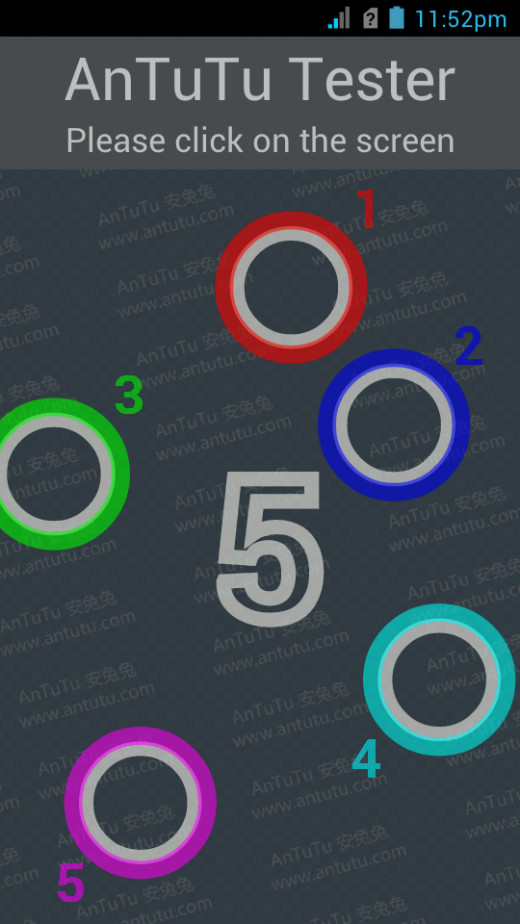
As usual, for users wishing to use Google's own Navigation software, their turn-by-turn navigation with voice is not available in the Philippines. However, you can still use Google Navigation to get directions and plot points for you whether you are driving or just walking/commuting. Also, you can use other navigation software on Android with turn-by-turn navigation with voice.
GPS chip testing on the Thrill 430x
Click thumbnail to view full-size


Conclusion
The Cloudfone Thrill 430x is certainly the road warrior's phone. The giant battery removes the need for any power banks even on long trips. The still shot camera is also another strength of the phone, being able to take excellent pictures in most conditions. Last but not least, the Sharp ASV screen is beautiful and will give IPS screens a whooping in terms of sharpness, contrast and color reproduction.
However, I do want to make a case for the Cloudfone Thrill 430x. The phone has in excess three things: battery, thickness and weight. Before you consider this phone, carefully think about your use patterns and usage. If you want to buy this phone thinking of that road trip three months from now, you might as well just buy a phone that better suits your immediate needs and buy a power bank or two for that trip. The battery on the Thrill 430x takes a while to use up. On light usage, you'll be just draining at most 20 to 25% of the battery per day. If you can afford to charge each night, the additional battery life becomes useless and you'll be left with a thick and heavy phone at all times. Mind you, the phone is 182 grams and 14.2 mm thick. In comparison, the Samsung Galaxy S3 is only 133g and 8.6 mm thick, and it's a much larger phone. BUT! If you are the said road warrior that cannot afford to charge your phone each night, the Thrill 430x is your best bet because the additional weight and thickness will be offset by the fact that it takes forever to die -- and that's a very good thing.
Alternatively, if you are also a very heavy user and are sick and tired of smartphones that die before nightfall, this is also a good choice. But again, if you leave your house with the Thrill 430x having at least 3/4th battery left, I can guarantee you that you'll be sleeping before the phone dies, no matter how hard you push it. It has THAT much battery. You might as well get a phone that can last you at least the whole day regardless of how much you push it, yet be better suited for your needs. Phones that can last at least a day of heavy use have batteries between 2000 and 3000 mAh.
Regardless, at 7,777 Php, this phone is a steal whatever your needs may be and the fact that no other phone comes close to having the same battery capacity as the Thrill 430x adds to its desirability.
Pros:
+ Peerless battery capacity
+ 4.3" 960x540 Sharp ASV screen is top notch stuff, can go toe-to-toe with phones in the 20K Php range
+ Very good still shot camera with strong dual LED flash
+ Dual-core Cortex A5 processor
+ Dual SIM
+ 768 MB of RAM
+ Good build quality
+ 7,777 Php only
Cons:
- 14.2 mm thickness and 182 grams is most likely a non-factor for guys, a big no-no for girls
- Camera has some focusing issues, also can't perform extreme macro shots on small subjects
- Video recording isn't up to scratch, particularly against MediaTek MTK6577 phones occupying the same price range
Official Cloudfone Thrill 430x Specs
Features: Dual SIM (dual standby), FM radio, GPS, dedicated camera button, 3 days battery life
Dimensions: 124.4 x 65.4 x 14.2 mm
Weight: 182 grams
CPU: 1.2 GHz Dual-core MSM8625 Qualcomm Snapdragon processor
OS: Android 4.0.4 Ice Cream Sandwich
RAM: 768 MB
Screen: 4.3" IPS qHD Capacitive Screen
Resolution: 960x540 pixels
Pixel per inch: 256 ppi
Internal Memory: 4 GB up to 32 GB via microSD
Camera: 8 MP Autofocus with dual LED Flash and 0.3 MP front facing camera
Sensors: Gravity, Proximity and Light sensor
Connectivity: Wi-Fi b/g, USB 2.0, Bluetooth 3.0 and 3G/HSPA
Battery: 4160 mAh
SRP: Php 7,777.00
© 2012 Kyle

